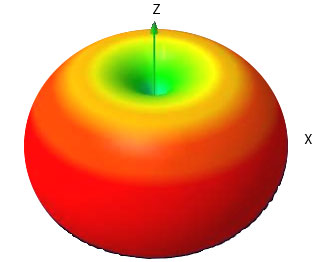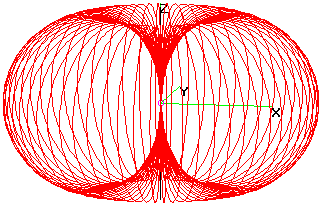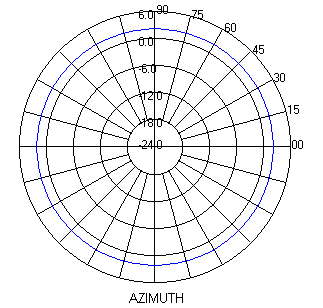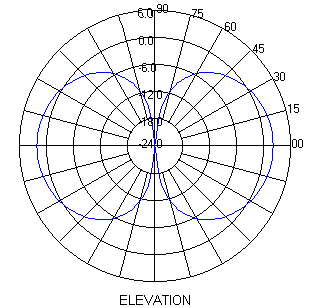

The donut-like radiation pattern of an omni-directional antenna is shown below. The image on the left shows that the radiation is focused near the horizontal plane (red color). As one moves above the antenna, gain diminishes, eventually becoming green, indicating the presence of little radiation. This is analogous to the diminished light as you move from in front of a flashlight to behind it.

|

|
Manufacturers generally publish the horizontal and vertical projections of these images for their antennae. The blue line on the left shows the shape of the pattern as viewed from above (as if the "donut" were sliced horizontally). The blue line on the left vertical cross section -- a vertical slice through the "donut."
The left diagram shows that at any angle, this antenna has a little more than 2 Db gain over an isotropic antenna. It is called "omni-directional" because it is the same from any angle.
The right hand diagram shows that if you move above the horizontal plane the antenna gain begins to diminish. At 90 degrees above the horizontal plane (directly above the antenna), it has dropped to zero.

|

|
Note that these diagrams do not show the distance a signal travels. They show the gain or loss relative to an isotropic antenna at different angles -- up/down, right/left -- from the antenna. Once we know where the receiving antenna is located relative to the transmitting antenna, we can estimate its effect on the signal strength.